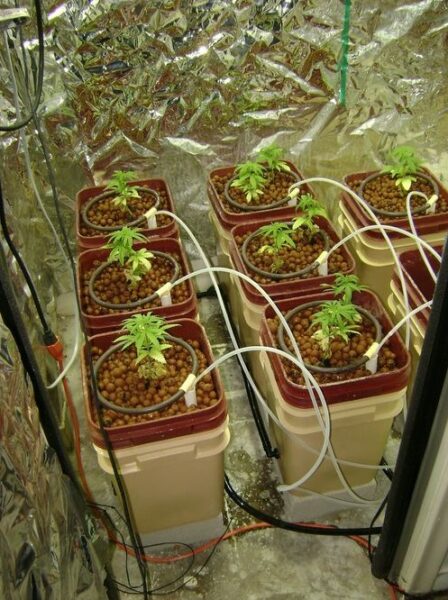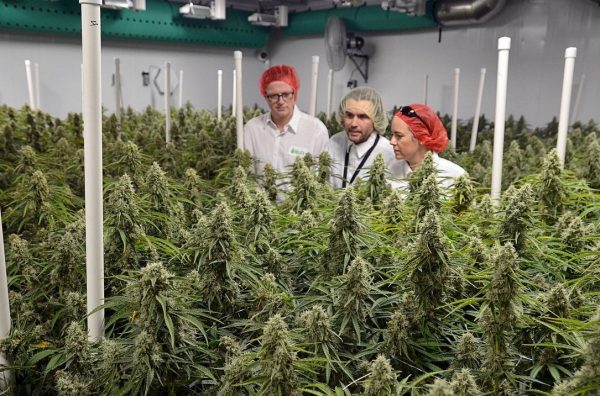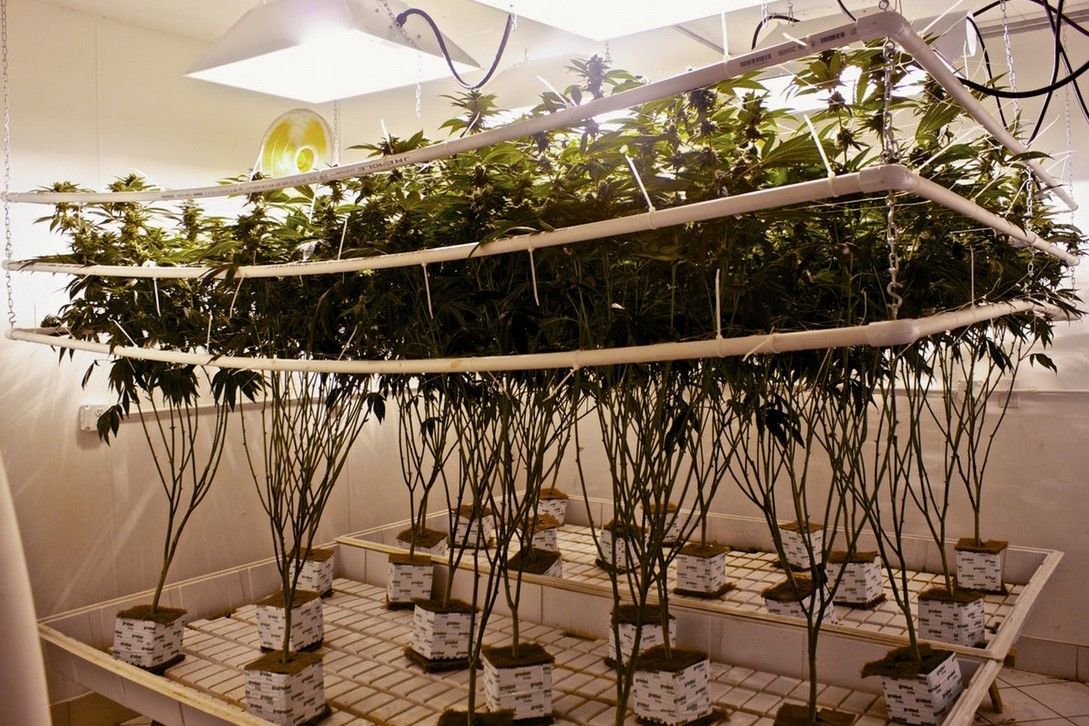Hydroponics is a Latin phrase that translates to “water operating.” It refers to producing plants in highly oxygenated water containing extra nutrients. Cannabis grown hydroponically, in basic terms, is cannabis cultivated without dirt. There are several methods for growing marijuana hydroponically. You may suspend your plants’ roots in Rockwool, clay pellets, water, coco peat, sand, or gravel.
You must provide a nutrient-rich solution to the roots, regardless of what you use as a growing medium instead of soil. The water that isn’t absorbed by the roots is recycled through the system for future absorption.
Simply said, you’ll discover all you need to know about hydroponic cannabis in this post.
Best Hydro Weed Strain
There are hundreds of cannabis strains accessible over the internet. However, we believe the following five represent a great balance of being simple to grow and generating a lot of yield:
- Gorilla Glue
- Blue Cream Pie
- Jack Herer
- Blue Dream
- Amnesia Haze
- Bubba Kush
What Is Hydroponic Cannabis?
The term “hydroponic” refers to a method of cultivating marijuana that does not require soil. In other words, you grow plants in an inactive growing medium with nutritional solutions. Previously, it was assumed that hydroponic systems were difficult and expensive; they were designed solely for commercial growth.
However, you may grow marijuana with hydroponics using anything as basic as a few pots of the inert medium. You may certainly choose for a more complicated alternative if you like, but it requires a lot of set-up time and upkeep.
Because of the difficulties connected with cultivating cannabis in soil, growing cannabis hydroponically has grown increasingly popular. It’s a much better option for indoor growers who have the following issues when growing marijuana “traditionally”:
- A never-ending desire to check the soil’s pH
- Determining the proper nutrient level
- Pests are always a potential problem.
- You could be unsuccessful in recycling the soil you employ.
- You must select the best soil since the quality of your final product is determined by it.
Hydroponics Nutrients
You’re in command of supplying your plants with all of their nutrients when you use a hydroponics system. Your plants will perish or give a poor yield if you make a mistake. On the plus side, because your marijuana plants’ roots may easily discover nutrients in a hydroponic system, they won’t waste energy looking for them.
Marijuana plants require oxygen, water, and a variety of nutrients in order to grow. Nutrients are divided into groups:
- Nitrogen
- Phosphorus
- Potassium
- Calcium
- Magnesium
- Sulfur
- Iron
- Chlorine
- Manganese
- Boron
- Zinc
- Copper
The three macronutrients that must be present in a haut-quality cannabis soil mix are nitrogen, phosphorus, and potassium. However, most solutions contain 15% of each (often known as a 15-15-15 solution). You’ll need more nitrogen if you grow marijuana at temperatures below 80 degrees Fahrenheit. Other possible solutions include 20-20-20 or 23-19-17.
Increase the potassium level during the growing process to at least 20% of a solution. When fertilizing plants, be careful because too much can harm them, while too little slows growth. When your reservoir’s water level drops, add three-day-old tap water. It’s also a good idea to alternate the nutrient solution every two weeks and clean all of your equipment, especially the pumps and reservoir, with hot water on a regular basis.

Setting up Your Hydroponic Cannabis Growing System
There are several hydroponic gardening systems to select from, and they’re all suitable for growing cannabis indoors. Regardless of the technique you use, the end result is always the same: a nutrient reservoir. After that, it’s placed beneath a developing tray made out of whatever inert growth medium you want, such as sand, gravel, or Rockwool.
Hydroponic cannabis cultivation is the process of growing cannabis in a liquid medium, often called hydroponics. The roots develop in the solution and grow through it to the nutrients. To fill the bottom layer with nutrient solution, you utilize a tiny pump with a timer. The pump’s timer shuts off after an allotted time spent feeding and watering the plants, at which point the solution drains back into the reservoir.
Because the plants are hung, they are exposed to air on a continuous basis, resulting in a flourishing crop. Your cannabis trees can put all of their energy toward growing. They waste energy trying to discover air, food, and water when grown in dirt. This is why marijuana grows so well in an excellent hydroponics garden.
You should discover “plug and play” hydroponic systems that have everything you need to get started. Even so, here is a list of things you’ll want for a basic system:
- One large (3 – 5 gallon) bucket per plant
- A water pump
- An air pump
- A reservoir tank
- An air stone
- A grow table
- A growing medium such as Rockwool or clay pellets
- Plastic tubing
- A drip line and up to two drip line emitters for each plant
There are numerous indoor hydroponic systems to select from, but we’ll stick to the most well-known.
Types of Hydroponic Systems
Deep Water Culture (DWC)
This is a very simple hydroponic system to set up, making it ideal for novices. Simply place the plants in separate containers and suspend each one in a grow tray filled with water. An air pump will be included in your water tank to maintain the water oxygenated. After that, you feed the roots with nutrients via the water.
The oxygenated air pumps ensure that they get enough oxygen even while submerged in water.
Drip Irrigation
This is a popular business solution since it saves a lot of water. Small droppers should be placed next to the plant’s roots, which are in pots with the growing medium. Little drips of this nutrient solution drip out on a regular basis and nourish the plant. It has a low rate of evaporation and, because it is quiet, makes an excellent cover strategy for protecting your crop from robbers while maintaining stealth.
Aeroponics
This is a one-of-a-kind approach since you won’t be using a growing medium. The majority of gardeners use only a tiny bit to root a cutting or start the seed, but this isn’t the case with marijuana. The marijuana plant’s roots are suspended in mid-air inside a chamber maintained at 100% humidity. You must utilize a delicate spray that includes nutrients.
In hydroponics, roots receive all of their water and nutrients from pots or trays filled with running water. This promotes a rapid development in the plant’s root system since it can absorb lots of oxygen this way. With practically no evaporation and plenty of growth, the plant may develop up to ten times quicker than it could in soil. If you utilize this approach, keep an eye out for clogged misting valves; they might prevent moisture from reaching your roots. This will cause harm to your plants.

Ebb & Flow
This is not the same as a lot of hydroponics systems, which require the roots to be submerged in water all of the time. It works similarly to an ocean tide, filling a tray with oxygenated water and treating the plants and growing medium. The pump switches off when it reaches full depth, and the solution drains into the reservoir. It remains in place until you are ready to re-water your garden again.
Nutrient Film Technique (NFT)
To make sure that no water goes to waste, you’ll need to fill your reservoir with a sufficient quantity of water. The NFT system includes transferring your water solution from the reservoir to your planting tube. It’s typical to employ big PVC tubing angled at a modest slope. This approach ensures that any drainage down the pipe passes by the roots of all marijuana plants before being recycled in the container. One of the most common difficulties with this method is that the water solution may stagnate in the channel and harm your plants if it does not drain properly. As a result, you must ensure that the tube is cut at a sufficient angle to allow for easy flow of water.
Wick System
This is yet another simple method. It functions similarly to a DWC system in that it utilizes a substance like rope through a PVC tube. The solution is pulled up the line and placed in the tray. You don’t need to bring water to the plants with the wick system, as you do with more complex systems. However, it’s an excellent method to learn hydroponics through hands-on experience.
What Are the Most Common Hydroponics Growing Mediums?
There are a number of different types of growing media, but five of them stand out. Please keep in mind that each one has its own set of pros and drawbacks.
Clay Pellets
Clay pellets are light enough to handle, yet they’re sturdy enough to support cannabis plants and may be re-used! They help oxygen reach the roots and drain moisture up.
Rockwool
Rockwool is a popular medium for hydroponics since it maintains moisture effectively. It’s made out of tiny rock fibers that have been spun at high temperatures into thin threads. Rockwool should be soaked in a solution with a pH of 5.5 to 12 hours before use if you want to use it as a hydroponic growing media. Make sure the pH is between 5.5 and 6 before using it.
Coconut Fiber
That is, Rockwool uses only one type of plant material for insulation. Because these fibers are made from waste products, they are more environmentally friendly than Rockwool. Coconut fibers also contain hormones that aid in the prevention of infection and disease.
Perlite
Perlite is a white, porous material that effectively retains and wicks moisture. In general, you should purchase chunks rather than granules since they hold more moisture. Each perlite particle has a tiny cavity covering the surface. As a result, each perlite particle provides a large surface area for nutrients and moisture to accumulate on. It’s a sterile substance so there’s no risk of bugs or disease transmission.
Vermiculite
Another crushed volcanic rock medium like perlite, vermiculite is also recognized for its excellent drainage. Despite being sterile, vermiculite isn’t generally used as a growing media alone, with growers instead choosing to combine it with perlite. If you decide to use it, find out where the seller acquired it from. Vermiculite mined in Africa is extremely alkaline, having a pH of 9.0 or higher.
Although hydroponics has several advantages, it has a few disadvantages as well. Let’s look at both sides of the issue next.

Final Thoughts on Hydroponic Weed
Hydroponic marijuana has a lot of benefits. It enables you to produce a lot more each year, and all you need is a little space to begin. It allows you to cultivate high-quality cannabis in areas where soil growth is prohibited. Pests are less of an issue, and the overall quality of well-crafted hydroponic marijuana is remarkable.
However, maintaining a completely sanitized grow area is difficult. If you do not keep the grow area entirely clean, your entire crop may fall victim to illnesses in a matter of days. It’s not something you can learn overnight; on the other hand, if you have the time, money, and patience, mastering how to cultivate cannabis this way may pay off handsomely.
However, we do not recommend it for leisure growers since it works best when producing huge quantities.

